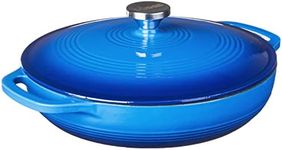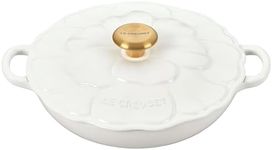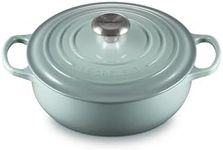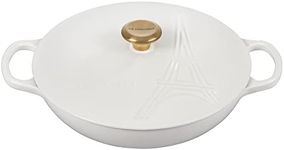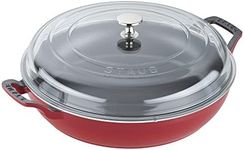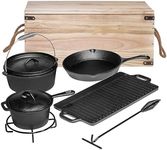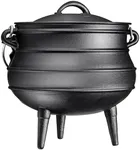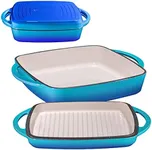Buying Guide for the Best Braisers
Choosing the right braiser can significantly enhance your cooking experience, especially when it comes to slow-cooking, braising, and making stews. A braiser is a versatile piece of cookware that combines the best features of a skillet and a Dutch oven. To find the best braiser for your needs, consider the following key specifications and how they align with your cooking habits and preferences.MaterialThe material of a braiser affects its heat retention, durability, and ease of cleaning. Common materials include cast iron, stainless steel, and enameled cast iron. Cast iron is excellent for heat retention and even cooking, making it ideal for slow-cooking and braising. Enameled cast iron offers the same benefits with the added advantage of being easier to clean and not requiring seasoning. Stainless steel is lighter and easier to handle but may not retain heat as well. Choose a material based on your cooking style and maintenance preferences.
SizeBraisers come in various sizes, typically measured in quarts. The size you need depends on the number of servings you usually prepare. A 3-4 quart braiser is suitable for small families or couples, while a 5-7 quart braiser is better for larger families or those who like to cook in bulk. Consider your typical meal size and storage space when selecting the size.
ShapeBraisers are generally round or oval. The shape can affect how the food fits and cooks. Round braisers are more common and fit well on standard stovetops, making them versatile for various recipes. Oval braisers are better for larger cuts of meat or whole poultry. Choose the shape based on the types of dishes you plan to cook most frequently.
LidA good lid is essential for a braiser as it helps retain moisture and heat. Look for a heavy, tight-fitting lid that will keep the steam inside, ensuring your food stays moist and cooks evenly. Some lids have self-basting spikes on the underside, which help to redistribute moisture back onto the food. Consider how important moisture retention is for your cooking when evaluating lids.
HandlesHandles should be sturdy and easy to grip, as braisers can be heavy, especially when full. Look for large, ergonomic handles that provide a secure grip, even with oven mitts. This is particularly important if you plan to move the braiser from the stovetop to the oven or table. Consider your comfort and safety when assessing handle design.
Oven-Safe TemperatureMany braisers are designed to be used both on the stovetop and in the oven. Check the maximum oven-safe temperature to ensure it meets your cooking needs. Most braisers can handle temperatures up to 450°F, but some can go higher. If you plan to use your braiser for high-heat cooking, make sure it can withstand the required temperatures.
Non-Stick CoatingSome braisers come with a non-stick coating, which can make cooking and cleaning easier. However, non-stick coatings can wear off over time and may not be suitable for high-heat cooking. If you prefer low-maintenance cookware and don't plan to use high temperatures, a non-stick braiser might be a good choice. Otherwise, consider the longevity and maintenance of the coating.

